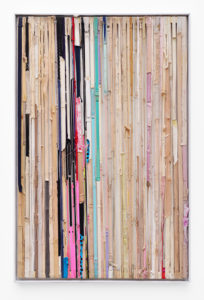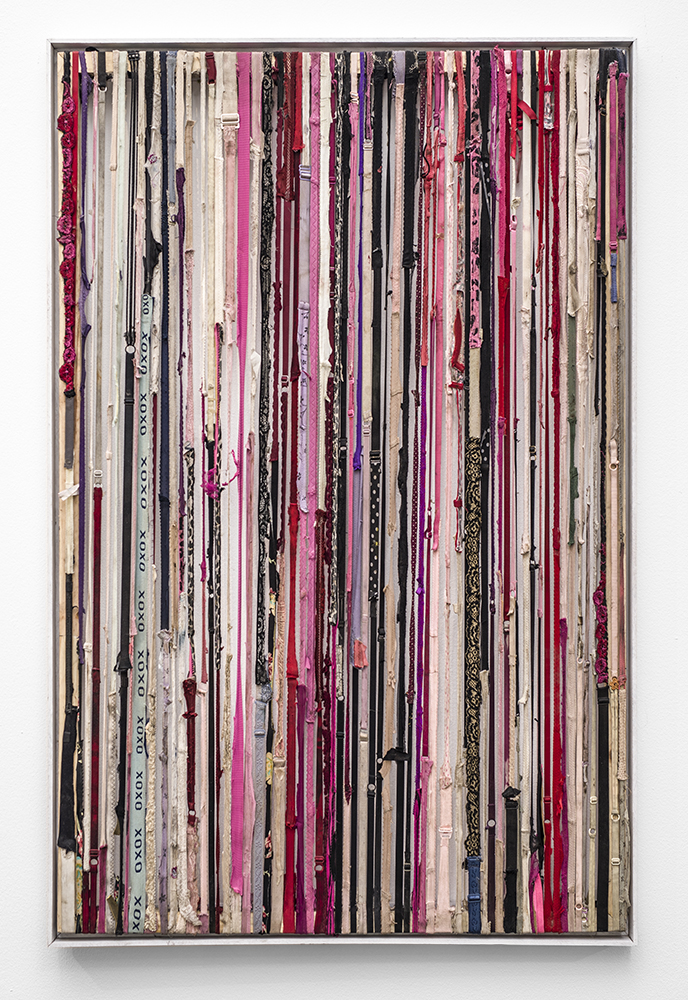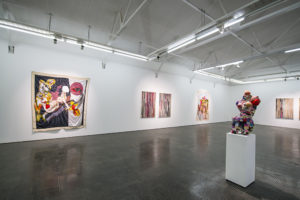
Kresiah Mukwazhi: Bedroom Interview, until 11. 08. 18, SMAC Gallery, Cape Town
Cut From A Different Cloth, 2018
About:
SMAC Gallery is proud to present Bedroom Interview, multimedia artist Kresiah Mukwazhi’s inaugural solo exhibition in South Africa. Bedroom Interview finds its most well-known reference in the recent #metoo movement, which spread as a viral hashtag in October 2017. Used on social media to help demonstrate the widespread prevalence of sexual assault and harassment – especially in the workplace – its use followed soon after the public revelations of sexual misconduct allegations against former Hollywood producer, Harvey Weinstein, who was accused of inviting numerous actresses into his hotel bedroom for professional meetings.

Kusexira To Seduce, 2018.
Mukwazhi is a contemporary multimedia artist and photographer based in Harare, Zimbabwe, who utilises various materials to draw attention to women’s issues, including gender-based violence and sexual assault. While Mukwazhi acknowledges how the global #metoo movement has impacted her work, she seeks to draw attention to local issues in the country of her birth and across Southern Africa. “The issue of powerful men who have been accused and exposed for sexual assault coincides with my work in a way that I feel is significant,” she says, “However, I have looked at Bedroom Interview as a reaction to issues that are more local and perhaps not known globally.” The artist cites the experiences of women working in the informal sector: those tending bars in nightclubs, donning bikinis for beauty pageants, removing their clothing in strip clubs.

Maboss Lady Acho Awanda, 2018
Working in a Harare nightclub herself brought Mukwazhi into intimate proximity with her subject matter. Many of the colours, patterns, and textures utilised in this body of work are inspired by the artist’s work environment, particularly after night falls and the occupancy at the bar multiplies – glinting sequins, deep purples, leopard print, flashes of lace. “It brought to light this specific public mind-set that, if you are a woman and you are employed, you must have compromised yourself sexually to management somehow,” says Mukwazhi. Initially describing her position as uncomfortable, Mukwazhi has come to refer to her experience of working at the bar as a kind of ‘residency programme’ – a trial by fire, as it were – with the work she has produced for this show reading as a report.
The artist sees her examination of issues surrounding female sexuality and gender-based violence as her own kind of activism, a way of contributing to critical discourse. Her use of women’s undergarments in her work – deconstructed bras, silky fabrics and lace such as those that make up petticoats and panties – not only echoes her attempt at promoting debate, it also serves as a metaphor for women’s radical resistance to patriarchy. The 1960s began an international era of so-called ‘radical feminism’, sparked by dramatic and at times deliberately provocative demonstrations. The most famous of these, often considered the first, occurred at the 1968 Miss America beauty pageant, when a small group of women crowned a live sheep, and dumped girdles, cosmetics, high-heeled shoes, and bras into a ‘freedom trash can’.

Somebody ‘s gotta be on top, 2018
Mukwazhi’s use of women’s undergarments also references some metaphysical and historical practices in her home country of Zimbabwe. One of these is known as mububobo, a kind of black magic where it is believed that a man can have sex with a woman from a distance and without her consent. The perpetrator uses a symbolic object – usually an undergarment belonging to the would-be-victim – to carry out a magical, remote sexual encounter. The practice is quite common in Masvingo, Mukwazhi’s home village, where it is believed to have originated. Metaphorically known as ‘bluetooth sex’ – given that it ‘connects’ perpetrator and victim within eye-shot and beyond – mububobo has influenced Mukwazhi’s work in the way in which it highlights the gravity of the vulnerability of women in African society.
The artist’s XXX series – female mannequins covered in the foam cups, rigid underwire, and silken bands of bras – takes inspiration from the work of Magdalena Abakanowicz, the Polish sculptor who transformed fabric into brooding forms that evoked the weight of political oppression and the desperation of the individual. Mukwazhi references Abakanowicz’ Heads and Backs – biomorphic, abstract, ovoid objects and quasi-humanoid forms, covered in natural fibres such as burlap and sisal – which spoke to the repression of individual creativity that Abakanowicz experienced whilst living under communist regime. Covered completely in fabric, dismembered, disassociated from their humanity, these works express the idea of being silenced. “Likewise,” says Mukwazhi, “my sculptures speak to the idea of women experiencing sexual assault, those who are silenced by the fear of being humiliated or the fear of poverty.”

Installation View, SMAC Gallery, 2018
Trained as a photographer through the Market Photo Workshop in Johannesburg South Africa, Mukwazhi’s photographs premeditate the subject matter for her sculptural pieces – a flattened bit of grass in a field that indicates a struggle; a discarded pink condom on the roadside; a pair of heeled sandals and a frilly sock, abandoned. Through a careful selection of symbols and objects, there are striking similarities in the ways in which Mukwazhi composes her images and selects her media for her sculptural works. The fragmentation of the human form appears to be a common theme. In her photography, items of clothing or abandoned personal effects speak to a human body, no longer present; in her sculptural works, deconstructed undergarments encase human forms, covering the traditionally fragmented torsos of women’s fashion mannequins with their amputated head and arms, their disembodied legs with pointed toes. Her paintings are like a procession of shadows, suggestively human figures stitched into one another, swirling around each other, scant cut-outs of the clothing they would normally wear (or remove).
According to Wangechi Mutu, “Females carry the marks, language, and nuances of their culture… Anything that is desired or despised is always placed on the female body.” Bedroom Interview is a powerful and unnerving body of work that reveals the female body as the site for these nuances, these remote encounters, these fragmentations, these silences.
